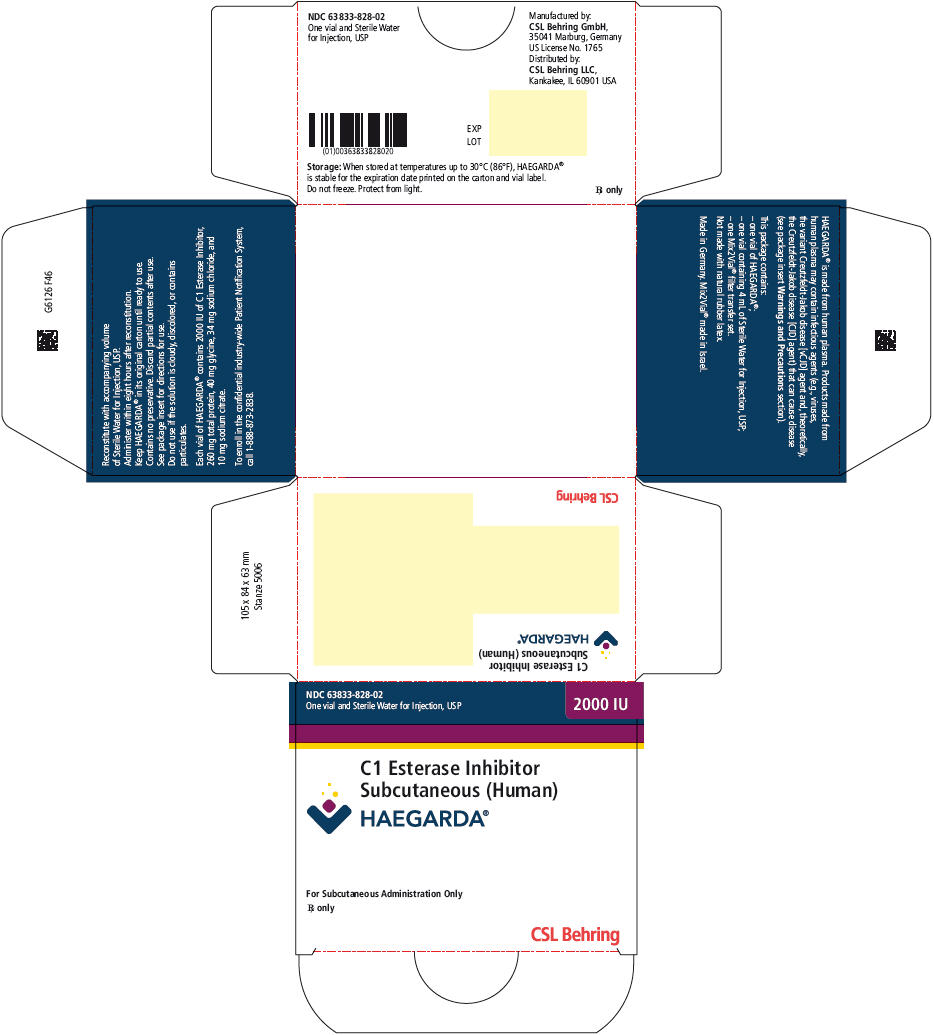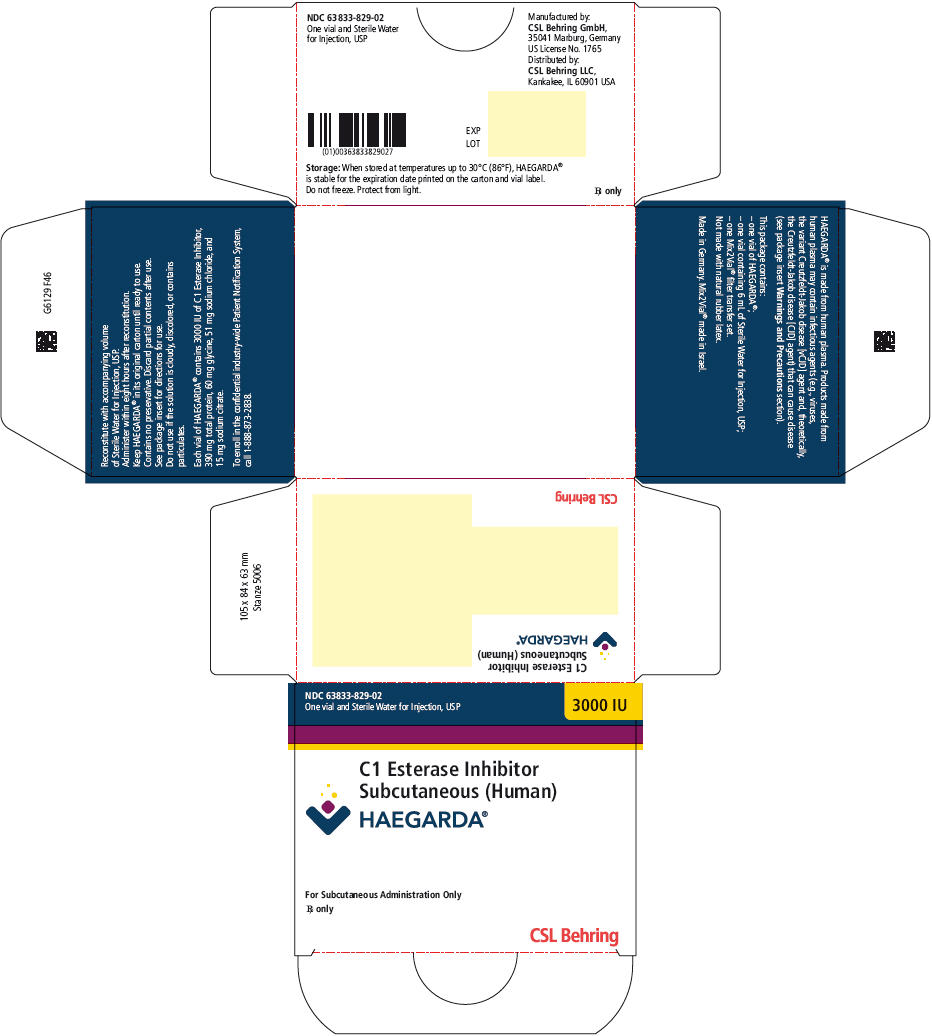C1 esterase inhibitor subcutaneous (Haegarda): Difference between revisions
No edit summary |
No edit summary |
||
| Line 313: | Line 313: | ||
|howSupplied=(Description) | |howSupplied=(Description) | ||
|storage=(Description) | |storage=(Description) | ||
|packLabel= | |||
|packLabel=[[image:C1_esterase_inhibitor_subcutaneous_Package_Label_1.jpeg|none|thumb|400px|This image is provided by the National Library of Medicine.]] | |||
[[image:C1_esterase_inhibitor_subcutaneous_Package_Label_2.jpeg|none|thumb|400px|This image is provided by the National Library of Medicine.]] | |||
|fdaPatientInfo=*All risks and benefits of HAEGARDA should be discussed with the patient/caregiver before prescribing or administering it to the patient. | |fdaPatientInfo=*All risks and benefits of HAEGARDA should be discussed with the patient/caregiver before prescribing or administering it to the patient. | ||
Revision as of 03:06, 9 July 2018
Editor-In-Chief: C. Michael Gibson, M.S., M.D. [1];
Disclaimer
WikiDoc MAKES NO GUARANTEE OF VALIDITY. WikiDoc is not a professional health care provider, nor is it a suitable replacement for a licensed healthcare provider. WikiDoc is intended to be an educational tool, not a tool for any form of healthcare delivery. The educational content on WikiDoc drug pages is based upon the FDA package insert, National Library of Medicine content and practice guidelines / consensus statements. WikiDoc does not promote the administration of any medication or device that is not consistent with its labeling. Please read our full disclaimer here.
Overview
C1 esterase inhibitor subcutaneous (Haegarda) is a Acetylcholine release inhibitor, Adrenergic receptor agonist that is FDA approved for the (type of indication of drug) of a list of indications, separated by commas.. Common adverse reactions include a list of adverse reactions, separated by commas..
Adult Indications and Dosage
FDA-Labeled Indications and Dosage (Adult)
Condition 1
- Dosing Information
- (Dosage)
Condition 2
- Dosing Information
- (Dosage)
Off-Label Use and Dosage (Adult)
Guideline-Supported Use
Condition 1
- Developed by: (Organisation)
- Class of Recommendation: (Class) (Link)
- Strength of Evidence: (Category A/B/C) (Link)
- Dosing Information/Recommendation
- (Dosage)
Condition 2
- Developed by: (Organisation)
- Class of Recommendation: (Class) (Link)
- Strength of Evidence: (Category A/B/C) (Link)
- Dosing Information/Recommendation
- (Dosage)
Non–Guideline-Supported Use
Condition 1
- Dosing Information
- (Dosage)
Condition 2
- Dosing Information
- (Dosage)
Condition 3
- Dosing Information
- (Dosage)
Pediatric Indications and Dosage
FDA-Labeled Indications and Dosage (Pediatric)
Condition 1
- Dosing Information
- (Dosage)
Condition 2
- Dosing Information
- (Dosage)
Off-Label Use and Dosage (Pediatric)
Guideline-Supported Use
Condition 1
- Developed by: (Organisation)
- Class of Recommendation: (Class) (Link)
- Strength of Evidence: (Category A/B/C) (Link)
- Dosing Information/Recommendation
- (Dosage)
Condition 2
- Developed by: (Organisation)
- Class of Recommendation: (Class) (Link)
- Strength of Evidence: (Category A/B/C) (Link)
- Dosing Information/Recommendation
- (Dosage)
Non–Guideline-Supported Use
Condition 1
- Dosing Information
- (Dosage)
Condition 2
- Dosing Information
- (Dosage)
Condition 3
- Dosing Information
- (Dosage)
Contraindications
CONTRAINDICATIONS
Warnings
Conidition 1
(Description)
Conidition 2
(Description)
Conidition 3
(Description)
Adverse Reactions
Clinical Trials Experience
Central Nervous System
- (list/description of adverse reactions)
Cardiovascular
- (list/description of adverse reactions)
Respiratory
- (list/description of adverse reactions)
Gastrointestinal
- (list/description of adverse reactions)
Hypersensitive Reactions
- (list/description of adverse reactions)
Miscellaneous
- (list/description of adverse reactions)
Condition 2
Central Nervous System
- (list/description of adverse reactions)
Cardiovascular
- (list/description of adverse reactions)
Respiratory
- (list/description of adverse reactions)
Gastrointestinal
- (list/description of adverse reactions)
Hypersensitive Reactions
- (list/description of adverse reactions)
Miscellaneous
- (list/description of adverse reactions)
Postmarketing Experience
(Description)
Drug Interactions
- Drug 1
- Drug 2
- Drug 3
- Drug 4
- Drug 5
Drug 1
(Description)
Drug 2
(Description)
Drug 3
(Description)
Drug 4
(Description)
Drug 5
(Description)
Use in Specific Populations
Pregnancy
Pregnancy Category (FDA):
(Description)
Pregnancy Category (AUS):
There is no Australian Drug Evaluation Committee (ADEC) guidance on usage of C1 esterase inhibitor subcutaneous (Haegarda) in women who are pregnant.
Labor and Delivery
(Description)
Nursing Mothers
(Description)g
Pediatric Use
(Description)
Geriatic Use
(Description)
Gender
(Description)
Race
(Description)
Renal Impairment
(Description)
Hepatic Impairment
(Description)
Females of Reproductive Potential and Males
(Description)
Immunocompromised Patients
(Description)
Others
(Description)
Administration and Monitoring
Administration
(Oral/Intravenous/etc)
Monitoring
Condition 1
(Description regarding monitoring, from Warnings section)
Condition 2
(Description regarding monitoring, from Warnings section)
Condition 3
(Description regarding monitoring, from Warnings section)
IV Compatibility
There is limited information regarding the compatibility of C1 esterase inhibitor subcutaneous (Haegarda) and IV administrations.
Overdosage
Acute Overdose
Signs and Symptoms
(Description)
Management
(Description)
Chronic Overdose
Signs and Symptoms
(Description)
Management
(Description)
Pharmacology
C1 esterase inhibitor subcutaneous (Haegarda)
| |
| Systematic (IUPAC) name | |
| ? | |
| Identifiers | |
| CAS number | ? |
| ATC code | ? |
| PubChem | ? |
| Chemical data | |
| Formula | ? |
| Mol. mass | ? |
| Pharmacokinetic data | |
| Bioavailability | ? |
| Metabolism | ? |
| Half life | ? |
| Excretion | ? |
| Therapeutic considerations | |
| Pregnancy cat. |
? |
| Legal status | |
| Routes | ? |
Mechanism of Action
(Description)
Structure
(Description with picture)
Pharmacodynamics
(Description)
Pharmacokinetics
(Description)
Nonclinical Toxicology
(Description)
Clinical Studies
Condition 1
(Description)
Condition 2
(Description)
Condition 3
(Description)
How Supplied
(Description)
Storage
(Description)
Images
Drug Images
{{#ask: Page Name::C1 esterase inhibitor subcutaneous (Haegarda) |?Pill Name |?Drug Name |?Pill Ingred |?Pill Imprint |?Pill Dosage |?Pill Color |?Pill Shape |?Pill Size (mm) |?Pill Scoring |?NDC |?Drug Author |format=template |template=DrugPageImages |mainlabel=- |sort=Pill Name }}
Package and Label Display Panel


{{#ask: Label Page::C1 esterase inhibitor subcutaneous (Haegarda) |?Label Name |format=template |template=DrugLabelImages |mainlabel=- |sort=Label Page }}
Patient Counseling Information
- All risks and benefits of HAEGARDA should be discussed with the patient/caregiver before prescribing or administering it to the patient.
Inform patients/caregivers to immediately report the following to their physician:
- Signs and symptoms of allergic hypersensitivity reactions, such as hives, tightness of the chest, difficulty breathing, wheezing, hypotension and/or anaphylaxis experienced during or after injection of HAEGARDA.
- Signs and symptoms of a thromboembolic event, including pain and/or swelling of an arm or leg with warmth over the affected area, discoloration of an arm or leg, unexplained shortness of breath, chest pain or discomfort that worsens on deep breathing, unexplained rapid pulse, numbness or weakness on one side of the body.
Inform all patients/caregivers:
- HAEGARDA is indicated for HAE prophylaxis and should not be used for the treatment of acute HAE attacks. Patients/caregivers should be counselled regarding the appropriate course of action if breakthrough HAE attacks occur while on HAEGARDA, including:
- Individualized rescue treatment for acute HAE attacks.
- Situations in which to seek immediate medical attention, such as acute laryngeal HAE attacks.
- Patients/caregivers must ensure an adequate supply of HAEGARDA when traveling.
- Because HAEGARDA is made from human blood, it may carry a risk of transmitting infectious agents, e.g., viruses, the variant Creutzfeldt-Jakob disease (vCJD) agent and, theoretically, the Creutzfeldt-Jakob disease (CJD) agent. Inform patients of the risks and benefits of HAEGARDA before prescribing or administering it to the patient.
- Patients with known risk factors for thromboembolic events are at an increased risk for these events.
- Ensure that the patient/caregiver has access to and has received training in the administration of subcutaneous epinephrine and/or other appropriate supportive therapy for the treatment of any acute anaphylactic or severe hypersensitivity reaction.
Advise female patients:
- Patients should notify their physician if they become pregnant or intend to become pregnant while taking HAEGARDA.
- Patients should notify their physician if they are breastfeeding or plan to breastfeed while taking HAEGARDA.
- Self-administration - Ensure that the patient/caregiver receives clear instructions and training on S.C. administration in the home or other appropriate setting and has demonstrated the ability to perform S.C. injection.
- The patient (or caregiver) has the necessary dexterity and comprehension to be trained to self-administer.
- Instruct patients/caregivers to record the lot number from the HAEGARDA vial label every time they use HAEGARDA.
- The attached HAEGARDA "Patient Product Information (PPI)" contains more detailed instructions for patients/caregivers who will be self-administering HAEGARDA.
Precautions with Alcohol
Alcohol-C1 esterase inhibitor subcutaneous (Haegarda) interaction has not been established. Talk to your doctor regarding the effects of taking alcohol with this medication.
Brand Names
- Haegarda
Look-Alike Drug Names
There is limited information regarding C1 esterase inhibitor subcutaneous (Haegarda) Look-Alike Drug Names in the drug label.
Drug Shortage Status
Drug Shortage
Price
References
The contents of this FDA label are provided by the National Library of Medicine.